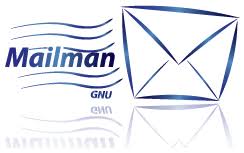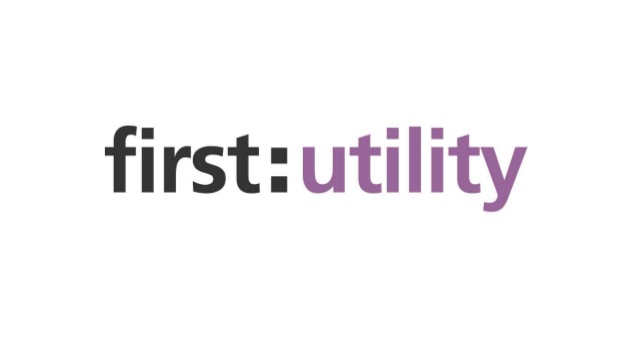
Unlock Seamless Group Communication with GNU Mailman: Your Guide to Mailing List Management
In today's interconnected world, efficient and reliable group communication is paramount for organizations, communities, and projects of all sizes. For those seeking a powerful, flexible, and transparent solution, GNU Mailman stands out as a leading choice for managing electronic mailing lists. Originating from the GNU Project, this free and open-source software is specifically engineered for the comprehensive management of email redistribution lists, facilitating announcements, dynamic discussions, and streamlined group communication.
What GNU Mailman Offers: Core Features and Capabilities
GNU Mailman provides a robust suite of features designed to simplify the creation, management, and content distribution for mailing lists:
- Integrated Web Interface: A key design aspect is its intuitive web interface, which empowers users to easily subscribe, unsubscribe, and manage their personal list settings. For list administrators, this web-centric approach allows for full control over list functions directly from a web browser, marking a significant improvement over older, command-line systems (although some of the main alternatives, for example Listserv and Sympa also have web interfaces.
- Comprehensive List Management: Each list can feature a customizable, publicly accessible web page. The system supports various user roles with distinct web interfaces, allowing regular members to self-administer, moderators to approve/reject posts, and administrators to have full oversight. Lists can also have multiple administrators and moderators, enhancing collaborative management.
- Advanced Message Handling: Mailman ensures efficient distribution, retention, and content quality with built-in features:
- Integrated Archiving: Discussions are automatically preserved, with Mailman 3 utilizing HyperKitty. These archives can be configured as public or private to meet specific privacy needs.
- Digest Delivery: Subscribers can opt to receive cumulative summaries of list traffic periodically, helping to manage email volume.
- Spam & Content Filtering: The software includes integrated spam and content filtering capabilities, with the ListAdmin class managing submissions requiring approval based on these rules.
- Automatic Bounce Handling: Mailman effectively detects and manages undeliverable email addresses, accumulating bounce scores and triggering configurable actions like disabling mail delivery or unsubscribing members when thresholds are exceeded.
- Privacy and Customization: GNU Mailman provides granular control over access and content with per-list privacy features. These include options for closed subscriptions, private archives, private membership rosters, and sender-based posting rules. The SecurityManager class is central to verifying authorization passwords for various user levels. Additionally, the system supports virtual domains, a crucial feature for organizations managing lists across multiple domains. Mailman also allows for extensive customization of its web interface to align with organizational branding.
The Evolution to Mailman 3: A Modern Architecture
Mailman 3 represents a significant architectural shift, moving from a monolithic design to a modular suite of five distinct projects. This strategic modularity enhances flexibility, allowing for independent development and deployment of components that interact via a REST API and modern web frameworks like Django. This design offers greater scalability, maintainability, and integration capabilities, though it introduces a higher degree of complexity in installation and configuration.
The key components of the Mailman 3 suite include:
- Mailman Core: The foundational system for message processing and delivery, handling all mailing list and user data, exposed via a REST API.
- Postorius: The official web user interface, built on Django, providing intuitive management for both members and administrators.
- HyperKitty: The new web-based archiver for Mailman 3, also developed with Django, offering a rich interface for accessing archived messages.
- Mailman Client: Provides official Python bindings for programmatic interaction with Mailman Core’s REST API, compatible with Python 3.
The Open-Source Advantage: Control, Transparency, and Community
GNU Mailman's foundation is its open-source nature, licensed under the GNU General Public License (GPL) version 3 or later. This licensing model ensures the software remains free and open, empowering users with the freedom to run, copy, distribute, study, change, and improve the software without proprietary restrictions. This fosters a vibrant, community-driven development environment that encourages contributions and transparency.
Technical Considerations for Deployment
GNU Mailman is designed for Unix-like operating systems such as GNU/Linux, BSD, Solaris, and MacOS X, and is primarily coded in Python.
- Python Versions: Mailman 3 requires Python 3.4 or newer, with Python 3.9 or newer being specifically recommended for its core and web components.
- MTA Integration: Successful deployment requires seamless integration with standard Unix-style mail transfer agents (MTAs) like Exim, Postfix, Sendmail, and qmail. Mailman 3 specifically requires MTA support for local agent delivery over LMTP (Local Mail Transfer Protocol). Postfix is a common complementary choice, with Mailman handling list logic and the MTA managing email delivery.
- Web Server Integration: Mailman 3 necessitates WSGI (Web Server Gateway Interface) support. Apache is a suitable choice for both.
- Resource Requirements: Resource allocation is dynamic, depending on factors like recipient numbers, message volume, and content processing. For general use, a minimum of 512MB of swap space and 128MB of RAM is suggested for stable operation, though high-traffic lists will demand more.
GNU Mailman is typically deployed in self-hosted environments, offering organizations maximum control over their data, security, and customization. For Mailman 3, this usually involves configuring its modular components as interconnected services, often utilizing a database system like MySQL or PostgreSQL and a process manager like supervisord.
Real-World Application and Industry Relevance
GNU Mailman is widely used across academic institutions, diverse communities, and project management teams for email discussion and announcement lists. Organizations such as Akamai, The IETF, Rutgers University, the US Department of Veterans Affairs, and Oracle leverage Mailman for their communication needs. Its relevance is underscored by its presence in job functions for IT professionals, Administrators, Site Reliability Engineers, and Systems Engineers, highlighting its significance in self-managed communication infrastructures.
By prioritizing control, flexibility, and community-driven development, GNU Mailman offers a compelling solution for organizations that need to manage their communications on-premises, often driven by specific security, privacy, or customization requirements. Its long history and continuous evolution, especially with the modular Mailman 3, affirm its enduring significance in the realm of group communication software.
















































